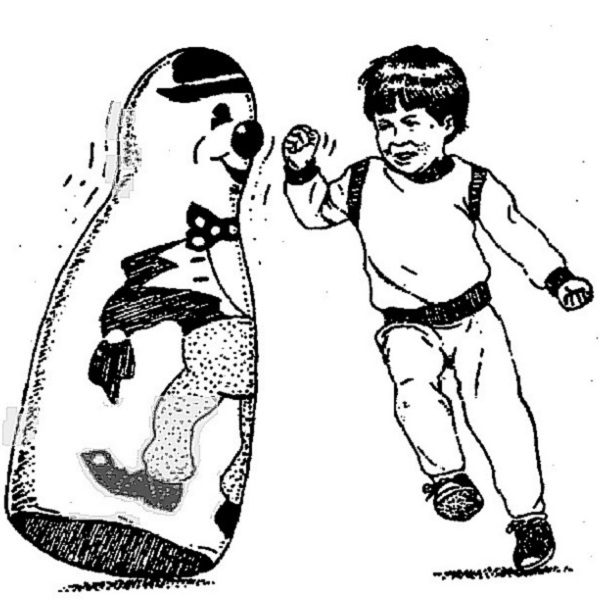Bobo Doll Experiment

http://https://www.youtube.com/watch?v=eqNaLerMNOE
Hello and welcome back to the “Psychology Experiments” series! Today I’m especially excited to touch base on a huge controversy in psychology -the nature vs. nurture debate. Specifically, it’s called the Bobo doll experiment that was conducted by Albert Bandura back in the 1960’s. Bandura’s goal was to prove that human behaviors are based upon social imitation instead of inherited genetic factors. The main question was: Are aggression and violence learned behaviors?
The Bobo Doll experiment involved children being exposed to either an aggressive adult model or a non- aggressive adult model. Then, the children were closely observed to see whether or not they would mimic the actions that were revealed to them early on. In order to successfully do this, Bandura gathered 36 boys and 36 girls with ages that ranged between 3 and 6 years old. Out of the total 8 experimental groups, 24 children were put into a control group in which no aggression from an adult is shown towards the blowup doll. Furthermore, the 24 individuals were divided by gender in order to test out a few hypotheses that were made about girls and boys. One of many assumptions was for example that boys would be way more aggressive than the females in the experiment.
Individually, each child was brought into a play area with various toys and activities. Soon after, an adult model (non-aggressive) was brought into the room to sit and play with a set of toys. The whole time the adult Ignored the Bobo doll and instead focused on different activities. In contrast, the aggressive adult model came into the room and violently attacked the doll in front of the child. Not only was physical aggression used, but also verbal phrases were repeated.
After about ten minutes, each individual was then taken into another room filled with more tempting toys. The rules were that the children were limited to 2 minutes to play with the toys. Meaning after the time was up, no more play time. Bandura included this in hopes of building up aggression and violence in the children to see how they would react. Finally after being taken into the last experimental room, the young participants were surrounded by a number of “aggressive-like” toys as well as “non- aggressive” toys. The time limit during this period was 20 minutes which revealed the results of the experiment.
Most of the assumptions Bandura came up with initially were correct in the end. He proved that children who were put into the control group did in fact imitate the behaviors exposed by the adult models. These satisfying results supported his social learning theory and he even took a step further and did a follow up study. Hopefully after reading this you know about Bandura’s well known experiment and how he influenced researchers today.
Sources Used:
https://www.verywellmind.com/bobo-doll-experiment-2794993
https://www.britannica.com/event/Bobo-doll-experiment